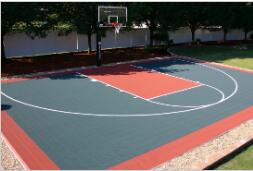How thick should a rubber gym floor be?
2024-06-06
The thickness of rubber gym flooring can vary depending on several factors, including the type of activities performed in the gym, the equipment used, and the level of shock absorption and protection required. Here are some general guidelines for rubber gym flooring thickness:
1. Heavy Free Weights and Strength Training Areas:
- For areas where heavy free weights are used, such as weightlifting platforms and powerlifting areas, thicker rubber flooring is typically recommended to provide adequate protection to the subfloor and equipment.
- Thickness: 1/2 inch (12 mm) to 3/4 inch (20 mm) or more.
2. Cardio and Functional Training Areas:
- Areas where cardio equipment like treadmills, elliptical machines, and stationary bikes are used, as well as functional training zones where activities like plyometrics and bodyweight exercises are performed, may require slightly thinner rubber flooring.
- Thickness: 3/8 inch (9 mm) to 1/2 inch (12 mm).
3. Multi-Purpose Gymnasiums and Fitness Centers:
- For multi-purpose gym spaces where a variety of activities take place, including cardio, strength training, and group fitness classes, a mid-range thickness of rubber flooring is often suitable to provide adequate support and shock absorption for all activities.
- Thickness: 3/8 inch (9 mm) to 1/2 inch (12 mm).

4. Impact Absorption and Shock Resistance:
- In areas where impact absorption and shock resistance are critical, such as in aerobic studios or areas where high-impact activities like jumping and agility drills are performed, thicker rubber flooring may be necessary to minimize the risk of injury.
- Thickness: 1/2 inch (12 mm) to 3/4 inch (20 mm) or more.
5. Underlayment Considerations:
- If additional cushioning or sound absorption is desired, especially in multi-level buildings or areas above ground floor, incorporating an underlayment beneath the rubber flooring can enhance comfort and reduce noise transmission.
- Thickness: Underlayment thickness can vary but is typically around 1/8 inch (3 mm) to 1/4 inch (6 mm).
6. Manufacturer Recommendations:
- It's essential to consult the manufacturer's recommendations for the specific type and brand of rubber gym flooring being used, as they may have specific guidelines regarding optimal thickness based on their product's design and intended use.
Ultimately, the appropriate thickness of rubber gym flooring will depend on the specific needs and requirements of the gym facility, as well as considerations for budget, installation feasibility, and long-term durability. Consulting with a flooring expert or manufacturer can help ensure that the chosen flooring thickness meets the facility's needs and provides adequate protection and performance for gym users.


